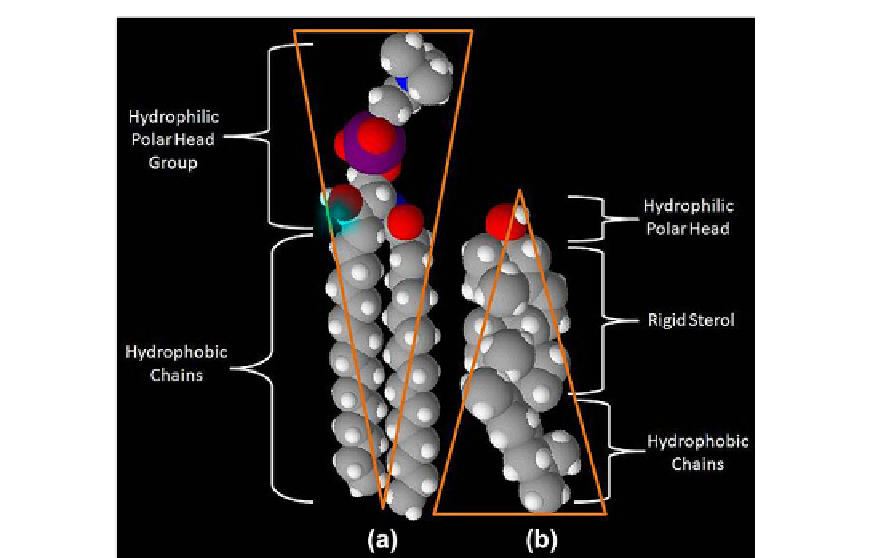Biology Reference
In-Depth Information
FIGURE 10.6
Space filling models of two major components of lipid rafts, SM (left) and cholesterol (right). Note,
in this depiction SM is drawn as a slight inverted cone, while cholesterol is cone-shaped. The two molecules fit
together, thus displaying 'complementarity'
[79]
.
of similar, coincidental insolubility of sphingolipids and cholesterol in the detergent solutions.
Non-detergent methods for raft extractions from membranes have now been developed
[16]
and are discussed inChapter 13. In general these newermethods support the basic conclusions
derived from the older detergent methods. Sphingolipids and cholesterol do appear to have an
albeit non-perfect affinity for one another.
An interestingmedical problemrelated to raft structure has recently come to light
[17]
.Heavy,
long termuse of cholesterol-lowering statindrugs, primarily in the elderly, has produceda result
similar to that of cyclodextrin on lipid raft stability. Statin-induced hypocholesterolemia has
resulted in the functional failure of cholesterol-rich lipid rafts in processes involving exocytosis
and endocytosis. For example, a five year trial showed a 30% increase in the incidence of diabetes
associated with a cholesterol reduction therapy. Long-term statin use has also been linked
through lipid raft failure to bone loss and fractures. These results surprisingly linking heavy sta-
tin use, cholesterol reduction by cyclodextrin, and lipid raft function in some important human
maladies may represent a new paradigm for medical interventions.
B. NON-LAMELLAR PHASES
When picturing a biological membrane, the first thing that comes to mind is the simple
lipid bilayer, but we have seen how deceptive this can be. Even the lipid bilayer (actually



